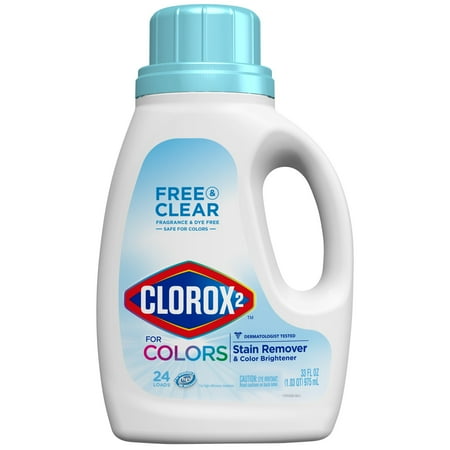Two Hoarders' Daughters Tell Their Stories
We've all heard about hoarders or seen documentaries about them on television. Few of us, however, have grown up in a hoarder's house. The children of hoarders have no choice. I'd like to introduce you to two of those children, now adults, who have written their stories.
 |
A Hoarder's Living Room Probably Looks More Cluttered than This
By Maschinenjunge [GFDL (http://www.gnu.org/copyleft/fdl.html) or CC BY-SA 3.0 (https://creativecommons.org/licenses/by-sa/3.0)], from Wikimedia Commons |
My
myLot friend, Lori Moore, wrote
The Hoarder's Daughter: Memories of a Life in Chaos. Her mother was not only a hoarder but also an emotional abuser. Lori wrote her book to show others what the life of a hoarder is like and how it often destroys the hoarder's relationship with family and friends. She hopes to help people distinguish between a real hoarder and a messy or really disorganized person that keep a lot of clutter around. She also wanted to finally expose her family secret. She says "Toxic family dysfunction has to be acknowledged before it can be fixed."
Izabelle Winter's father also hoarded his possessions. Izabelle had left home as a young woman to escape the house.When she was married with eight-year-old twin girls and a ten-year-old son, her father fell from a ladder while pruning. He had turned his backyard into a garden all his neighbors admired, but most had never seen the inside of his house.
Izabelle's mother had died nineteen years earlier, after a mental breakdown. Isabelle's brother Ant still lived in the house with his father even though he was long into adulthood. He suffered from learning disabilities that hindered his ability to make decisions and take initiative. Isabelle knew she would have to take charge of getting the house ready for her dad to come home to, probably unable to walk. She wrote
Diary of a Hoarder's Daughter to help others who may find themselves in a similar situation.
Lori's Story of Living with Emotional Abuse in a Hoarder's House
Lori writes as an abuse survivor. She dedicates her book to her brother whom she calls "my sibling survivor of the lying, manipulating, stealing, and hoarding person that we un affectionately referred to as 'Mean Mom.'" In the book she calls her mom Louise, though it's not her real name. Louise had so perfected her skills of intimidation and inducing guilt that Lori was fifty before she realized she was the abuse victim -- not her mom. Although her brother was also a victim, Lori believes his story is his to tell, not hers, so she tells only her part of it.
Growing Up in a Hoarding House
Lori recalls that the house she grew up in smelled so bad that people almost gagged when they walked in. The house was already full but her mother kept accumulating and the possessions had to go onto the backyard patio. Lori called the junk at the entrance "Mount Trashmore."
There were also health hazards. I won't go into all the horrifying details, but here are a couple to give you an idea. Trash was strewn everywhere. There was an air force of flies and gnats. There were maggots in the toilets and sinks. A stray cat had become part of the household, but no one cleaned the litter box, so the cat stopped using it. I think you've got the picture. It was so bad that Lori's brother, who had inherited the house, had to evict Louise from it after she'd lived there for 19 years.
Trying to Help Louise
After the eviction, Lori and her brother found a low-rent apartment for senior living and Louise didn't even pack since she resisted moving. Lori and her brother had supplied the new residence with clean furnishings and clothing and stocked the apartment with food. Louise had already begun to hoard again a month after she had this chance to start fresh. After four months she had done no cleaning, dishwashing or laundry.
How This Affected Lori
Lori's parents divorced when she was eleven. Her father and brother were now a hundred miles away and she missed them. Her mother neglected her and she was often hungry. This probably is part of what led to Lori's eating disorder. Lori also suffered the lack of love, security, protection, and approval she craved. She believes her mother was incapable of providing it.
Because of the emotional abuse and the secrecy the hoarding behavior required, Lori was socially isolated. She could not have friends over. She has been through years of therapy to deal with the abuse she has endured.
In spite of what she suffered during childhood as a hoarder's emotionally abused daughter who struggled with guilt, lack of parental support, and social isolation, Lori has had a successful adult life. She has four graduate academic degrees and has been an adjunct professor and an upper level manager for large corporations. She has also written several books besides this one.
Things I Learned from Lori's Book
Besides just telling her story, Lori did a lot of research on hoarding and emotional abuse. She covers some of these areas:
- Ways in which emotional abuse and hoarding are related.
- Manifestations of Antisocial Personality Disorder
- Symptoms of a Cognitive Disorder
- Cognitive Symptoms of Depression
As I was reading through the behavior of someone with Antisocial Personality Disorder, something hit me like a bolt of lightning. I believe that's what my daughter suffered from. It may be part of the reason for
her suicide as an adult.
Izabelle's Efforts to Clear Space in a Hoarder's House
Izabelle Winter, a busy mother with a part-time job, had to completely disrupt her life for over a month to suddenly deal with what she saw as her "personal Everest" that she had to climb -- alone! She even refers to the clutter in her father's house as "The Mountain" whenever she writes about dealing with it. Because she found around sixty pairs of shoes in the clutter she went through, she calls her father Imelda in the book, after
Imelda Marcos.
Climbing "Everest"
Izabelle had a deadline to clear enough space in the house for her father and visiting outside help to function. He could not be released from the hospital with a broken back until this was done. Wheelchair or walker access might also be needed. He needed to be able to get to his bed and an accessible bathroom.
The problem with clearing space in a hoarder's house is that there is no room for sorting. Every available space in Imelda's house was filled with junk from floor to ceiling -- every room, every cupboard, and every path through the house. The kitchen, bathroom, and stairs were also full. None of the items were organized. Junk mail mixed with shoes, clothes, spare parts, broken items, unopened packages of children's clothes, money inside magazines and receipts, trash ... well you get the idea. Izsabelle describes her feelings here:
I felt as though I was at Everest base camp, all alone, wearing just flip-flops and a woolly hat. I was totally unprepared for the nightmare I faced; totally terrified by it and afraid I'd fall on the way up the mountain. I just wanted to go home and hide.
Health Issues
To add to Izabelle's problem, she had severe dust allergies and asthma. She sometimes had been unable to breathe when around too much dust. This often sent her to the hospital and she almost died there once. How was she to attack clearing the space Imelda needed? Even on her visits to him she always talked to him outside in the garden.
After he fell, whenever she entered the house to work she had to wear a dust mask, trousers, and long sleeves. When she started the clearing project, she had to recruit help, often from her brother Ant, to carry boxes of stuff outside so she could sort there.
Helpful People Who Told Comforting Stories
You can just imagine Izabelle's life, caring for her children, working on "The Mountain," and visiting Imelda in the hospital every afternoon just before going to work in the late afternoon. I will leave the details for you to read in the book. She attacked the junk piles methodically and searched through every pile or box before throwing anything from it in a trash bag. Close friends and neighbors often helped her, and they told her stories about her mother from the good years. She appreciated that. She also unearthed diaries her mother had written that showed how the hoarding had affected her.
It's Hard to Cure a Hoarder
In videos, watch a woman choose her stuff above her relationships. She just can't let go. But we do get a feel for why some people hoard and why they can't stop even with professional help.
Success?
When Imelda was finally released from the hospital, Izabelle had cleared enough space so he could come home and sleep in his bed and take care of his needs. She and her friends had worked almost nonstop in every spare minute. Later Izabelle and Imelda were approached to participate in a BBC documentary show on hoarding. After much soul searching and discussion with the producers, they decided to participate. Later they did a follow-up episode. Before that episode, professionals came to clear the living room enough to allow Imelda's grandchildren to get to the sofa so they could sit there together to interact. The camera view of the room was clear, even though some stuff still remained outside the camera view.
The idea was that they took everything out and were hoping Imelda wouldn't want to bring it all back in, but he did want to bring most of it back in. Izabelle didn't visit much that first month. She wanted to see if her father would actually clear anything he had said he would.
Six months after the program was filmed, Imelda's stuff was creeping back up the stairs and into other places Izabelle had cleared. She decided it's his house and she would let him live as he chose. It's hard for a hoarder to change -- even with professional help. She accepted he'd never change at 83. Ten months after the fall, at the time the book was written, the house was filling up again.
 Diary of a Hoarder's DaughterCheck Price
Diary of a Hoarder's DaughterCheck Price
Contrasting These Memoirs by Hoarding House Survivors
Both books discuss these topics.
- Some reasons people hoard
- Broken family relationships due to hoarding
- Experiences of family members trying to help hoarders
- Descriptions of hoarder house conditions
- Health hazards of hoarding and living with a hoarder
Unique Content in The Hoarder's Daughter by Izabelle Winter
Izabelle had a deadline to meet and had to act quickly to meet it. She emphasizes the emotional and physical struggles of clearing rooms without harming her own health. She goes into more detail than Lori about the mess and the clearing strategy she used. Izabelle was less socially isolated than Lori appeared to be in clearing clutter, and her friends and neighbors supported and helped her. Lori and her brother seemed to do most of the work in helping their mother themselves.
Izabelle goes into much more detail on the thinking process of a hoarder. A hoarder's perception of value is different than that of someone who is just messy and accumulates more clutter than neater people do. Because Izabelle understands the process, she realizes she won't be able to change her father. Since he seems to be able to function in the mess, once he heals, she leaves him be and resigns herself to the condition of the house going back to what it was.
Although Izabelle doesn't analyze her father's mental conditions as much as Lori does her mother's, she does mention the ways that her father still treats her like a child. She goes into detail about his selective hearing and not caring about what she and her children have to say to him about everyday things unrelated to the hoarding. She feels dismissed because she is female. She gives examples of conversations that make her point. She doesn't label this as emotional abuse, but Lori probably would have.
Isabelle's story is primarily about dealing with "The Mountain" and her relationship with her father in that context. While clearing she also unearths her mother's diaries that reveal the effect the hoarding had on her mother's mental health.
Izabelle seems to have a better relationship with her father than Lori did with her mother, in spite of the past and continuing problems caused by the hoarding that affected her life. Example: Izabelle visits her father and brother often, but she doesn't visit with them in the house because she can't breathe inside the house. I don't know whether her visiting is also primarily because of her brother. She did want her children to have a relationship with their only living grandparent.
Note: One thing that took some getting used to while reading this were all the uniquely British terms Izabelle used that aren't in American English. Izabelle lives in Wales.
Unique Content in The Hoarder's Daughter by Lori Moore
Unless Izabelle left out some of the worst details in the hoarding, it would appear that Lori's mother's hoarding was more unsanitary than that of Izabelle's father. Perhaps that is because Ant, an adult child, still lived with him to see that it didn't get to the place where feces -- both human and cat -- were scattered around. Louise's house didn't deteriorate that much until Lori and her brother had moved out and she lived in the house alone.
Lori shares, as noted above, many of the facts and symptoms of the disorders that turn someone into a hoarder. She points out that secrecy is a factor in both emotional abuse and hoarding. In her research she discovered that hoarding is a distinct genetic subtype of Obsessive Compulsive Disorder. The best chance for changing the hoarding behavior appears to be Cognitive Behavioral Therapy in the hoarder's home. A hoarder needs a lot of help in developing new habits. You can see this process in the videos I shared above.
Both Lori and Isabella struggled with their duty to their hoarding parents. Lori shares Billy Graham's suggestions for how to honor a parent engaged in such behavior without enabling the behavior itself. Lori alone provides a list of helpful resources and things to read for those who want to dig deeper.
More Resources
Here are some additional resources if you want to get more information not included in these memoirs. Amazon Prime has several videos on hoarding and helping hoarders.
Click here to see the list. At least some are free for Prime members to watch.
The product page for the book below has an informative series of clutter rating images by Randy Frost and Gail Steketee, experts in dealing with hoarding. These images can serve as a guide in identifying the difference between normal clutter and a hoarding disorder.
 Stuff: Compulsive Hoarding and the Meaning of ThingsCheck Price
Stuff: Compulsive Hoarding and the Meaning of ThingsCheck Price
The books below are aimed at those who fear they may be headed toward hoarding and want to deal with it now, those who want to help a loved one with a clutter problem, and those who want to understand and help those close to them they suspect may have a hoarding problem. The two memoirs I've reviewed here are also included for convenience.
Whether you have a tendency toward hoarding, want to help someone with a severe hoarding problem, or just want a better understanding of hoarding, I hope this post has helped you. If it has, please share it. People who hoard tend to keep it secret. You never know whom you may be helping by giving them this information.
The image above is credited as follows: By TheDoctorMo [CC BY-SA 3.0 (https://creativecommons.org/licenses/by-sa/3.0) or GFDL
(http://www.gnu.org/copyleft/fdl.html)], from Wikimedia Commons, modified
Note: The author may receive a commission from purchases made using links found in this article. “As an Amazon Associate, Ebay (EPN), Esty (Awin), and/or Zazzle Affiliate, I (we) earn from qualifying purchases.”

 Items Needed:
Items Needed:
 Step 4: Shake up the Rust-Oleum spray paint
Step 4: Shake up the Rust-Oleum spray paint

























































